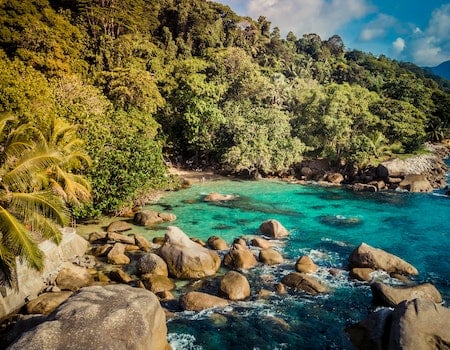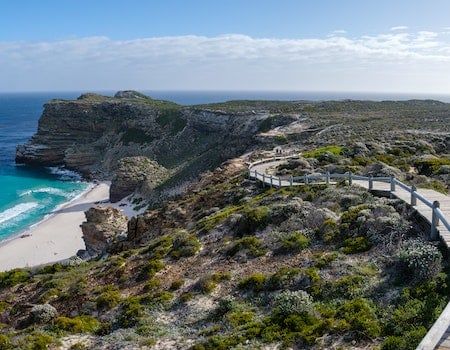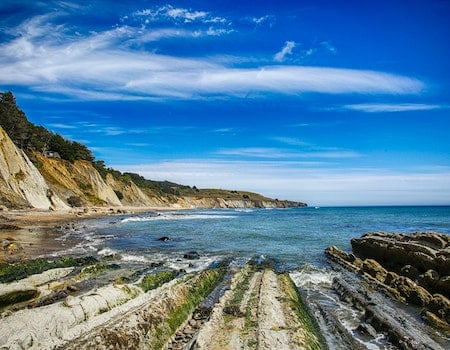The Languages of the Solomon Islands Archipelago
For quite some time, we’ve wanted to come up with a blog about the languages of the Solomon Islands Archipielago. Well, here it its.
The Solomon Islands Archipelago is a group of more than 900 islands located in the South Pacific Ocean, many of which are populated by indigenous cultures. For thousands of years, it has been home to a wide variety of cultures, languages and customs, as well as some of the most breathtaking views on Earth.
For most people, the Solomon Islands are known for their stunning landscape, white sandy beaches and crystal clear waters; but they’re also home to some of the oldest languages in the world. While the official language spoken in these territories is English, there are at least 120 distinct dialects spoken on the islands, most of which are unique to the region.
Let’s plunge into the fascinating world of the languages of the Solomon Islands.
Table of Contents
The Languages of the Solomon Islands: The Main Language Families
Austronesian languages
Papuan languages
Other language families
The 5 Main Languages of the Solomon Islands
1. Gela (11,900 speakers)
2. Pijin (23,800 speakers)
3. Kwara’ae (32,400 speakers)
4.’Are’are (17,800 speakers)
Why learn to speak the languages of the Solomon Islands?
The Solomon Islands are some of the most paradisiac places on Earth
Learning little-known languages is a great way to help keep them alive
Learning challenging languages is a great exercise for your brain
→Sign Up Now: Free Trial Language Lessons With Native Teachers!←
The Languages of the Solomon Islands: The Main Language Families
Austronesian languages
Of all the languages spoken in the Solomon Islands, the vast majority of them are Austronesian languages (about 70 percent of the total number). These languages originate from Taiwan and Southeast Asia, and have been spoken in the islands since ancient times. The Austronesian languages of the Solomon Islands include: Bauro, Fataleka, Malaitan, Lau, Gela and Ulawa.
Papuan languages
Another major language family in the Solomon Islands is Papuan languages, also known as the Central Solomon languages. These languages are native to the islands and were spoken long before any Austronesian languages arrived. The Papuan languages of the Solomon Islands include: Yabim, Kewa, Baegu and Arosi.
Other language families
In addition to the Austronesian and Papuan languages, there are also a small number of other language families spoken in the Solomon Islands. These include Polynesian, Micronesian and even some languages from the Americas. Some of the most widely spoken languages in these smaller families are Rotuman, Hawaiian, Marshallese and Quechua.
The 5 Main Languages of the Solomon Islands

1. Gela (11,900 speakers)
Where is it spoken?
Gela is an Austronesian language spoken in the New Georgia Islands and Rendova areas of Western Province. It is closely related to the Tawala language, and is used mainly by local farmers.
Main features
Gela has a complicated system of noun classes, which are used to distinguish between various types of nouns. It also has an elaborate set of verb tenses and moods for expressing past, present, future and hypothetical events.
Useful Phrases
Hello: ‘Mlea
Goodbye: Vaka na mai
Thank you: Mereka
Yes/No: O/Ta’e
2. Pijin (23,800 speakers)
Where is it spoken?
Pijin is an English-based creole language spoken in the Solomon Islands since colonial times. It is used as the official language of government and communication and is widely spoken in urban areas.
Main features
Pijin combines English vocabulary with local grammar and pronunciation. It is a simplified language that uses phonetics, making it easier for speakers of any language to understand.
Useful Phrases
Hello: Halo
Goodbye: Tatapela
Thank you: Tenkyu tumas
Yes/No: Aes/Nao
3. Kwara’ae (32,400 speakers)
Where is it spoken?
Kwara’ae is an Austronesian language that is mainly spoken in the western and central provinces of the Solomon Islands. It is one of the most widely spoken languages in the archipelago and is used as a lingua franca for inter-island communication.

Main features
The Kwara’ae language is incredibly rich, with a large number of noun classes and verb declensions. It also includes a unique system for expressing politeness, which is used to show respect in different contexts.
Useful Phrases
Hello: Mifala i gat tok
Goodbye: Bae hao
Thank you: Tan tau
Yes/No: Aes/Nao
4.’Are’are (17,800 speakers)
Where is it spoken?
‘Are’are is a Papuan language that is mainly spoken in the southeastern part of the Solomon Islands. It is closely related to the Yabim language, and has been used by local people for centuries. It’s one of the most widely spoken Papuan languages in the islands.
Main features
The ‘Are’are language has a relatively simple grammar and pronunciation, making it relatively easy to learn. It also has a unique system of incredibly detailed prepositions which are used to refer to the exact position of objects in relation to one another.
Useful Phrases
Hello: Ua’Afale
Goodbye: Fa’Olo
Thank you: Pasa Ua’Afale
Yes/No: Aes/Kara
Why learn to speak the languages of the Solomon Islands?
Learning the languages of the Solomon allows a greater understanding and appreciation of the diverse cultures that make up these islands, allows for better communication and understanding between people from different backgrounds, and, of course, it can be a great way to open up opportunities in the job market.
But there are many more reasons why taking on the challenge of learning these languages is the best thing to do.

Here are some them:
The Solomon Islands are some of the most paradisiac places on Earth
If you are a passionate traveller looking for amazing landscapes, tropical beaches and unique wildlife you will find it all in the Solomon Islands. And, of course, speaking some of the native languages can be a great way to get to know the culture and customs of the local people while you travel. Some of the most popular destinations among tourists include the World Heritage site of Honiara, the stunning Munda Island and the pristine Gizo Lagoon, not to mention the famous Marovo Lagoon (located in the far eastern part of the archipelago) which is the largest lagoon in the world.
Learning little-known languages is a great way to help keep them alive
By learning a language that is rarely spoken outside its own country, you become part of the effort to preserve and protect it. The Solomon Islands have seen their language diversity decrease drastically over the past few decades, and with it their unique culture and identity. That is why deciding to learn a language from the archipelago is such an important decision, not only from a personal point of view but also from a cultural perspective.
Learning challenging languages is a great exercise for your brain
Learning languages that will challenge your cognitive abilities is a great way to exercise your brain and expand its capacities. Some of the languages of the Solomon Islands, like ‘Are’are or Kwara’ae, have complex grammatical and phonological structures that can challenge even the most experienced language learners. Mastering the Solomon Islands languages will give you a great sense of achievement, and they can even be a great way to advance your career prospects in fields such as linguistics, anthropology or international diplomacy.
The Solomon Islands are home to some of the most fascinating languages in the world, which offer a unique window into their culture and history. Learning to speak even a few words of any of these languages is not only a great way to open up opportunities in the job market, but also a fantastic way to get to know the locals and explore their amazing archipelago.
So why not give it a try?
→Sign Up Now: Free Trial Language Lessons With Native Teachers!←
At Listen & Learn, we offer customised courses in more than one hundred languages so that even the bravest among our clients can get the opportunity to learn and discover the beauty of learning a new language.
So, what are you waiting for? Take the plunge and come explore the languages of the Solomon Islands with us! Send us a quick message now and we’ll get back to you within two business days.


